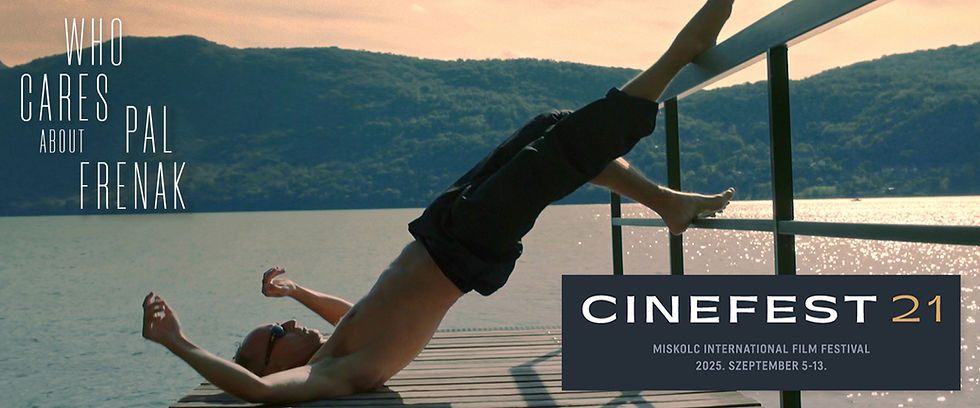Frenák documentary nominated for the most important New York Dance Awards
- dora
- May 14
- 2 min read
May 2025 kultura.hu
Who Cares About Pal Frenak, an American-Hungarian feature-length documentary directed by Glória Halász, about the extraordinary life of internationally acclaimed French-Hungarian contemporary dance choreographer Pál Frenák, has been nominated for a Chita Rivera Award in New York.

Founded in 1982, the award (formerly known as The Astaire Awards) is being presented for the 33rd time this year and has been named after Chita Rivera since 2017. The two-time Tony Award winner, who passed away in 2024, was a world-renowned American actress, singer and dancer who played iconic roles in the premieres of Broadway musicals such as West Side Story, Chicago and A Spider's Kiss. Her film credits include Sweet Charity and her last film appearance in Tick, Tick... Boom!
The Chita Rivera Awards recognize outstanding dance and choreography from Broadway, Off-Broadway and film, as well as dance-themed film. Who Cares About Pal Frenak is nominated in the Best Documentary Directing category. Previous winners of the prestigious lifetime achievement awards include legendary artists such as Bernadette Peters, Joel Grey, John Kander and Kristin Chenoweth. The gala will take place on 19 May at the NYU Skirball Center in New York.
Company FrenAk, the company of Pál Frenák, is today one of the best-known cutting-edge contemporary dance theatre companies in Europe and Asia. The film is a portrait of Pál Frenák, from his traumatic childhood to his current success, and how his commitment to the art has allowed him to play out tragedy and his inner demons. The film explores the struggle of the choreographer, born the eighth child of deaf and mute parents, who was placed in an orphanage at the age of six following the untimely death of his father.
On how sign language, dance and audience attention are connected, she said in an earlier interview, "My mother tongue is the sign language of the deaf and hard of hearing, so verbality was not the first medium in which I made contact with the outside world. In movement art, anyway, the experience is not perfectly verbalizable. I convey ideas through feelings, so I always encourage people to try to open their attention to feelings, because there are millions of inner contents that cannot be expressed in words and rationally understood." She has learned that only the art of movement and dance can save her from the traumatic experiences of growing up without a family in an emotionless and repressive communist country. After
"When working on a piece, there are random elements of the creative process that I cannot know in advance. Many times I build up a very strong concept, and as I work on it, elements come up that I then put more emphasis on. I always ask the dancers to focus not on the specific movement, but on the feeling that the movement evokes. Sometimes someone slips further than expected in a movement or is a little lower in a hang, but I always encourage them to build on the unexpected in a constructive way, because these chance encounters can give rise to new choreographic chains," he told the magazine



Comments